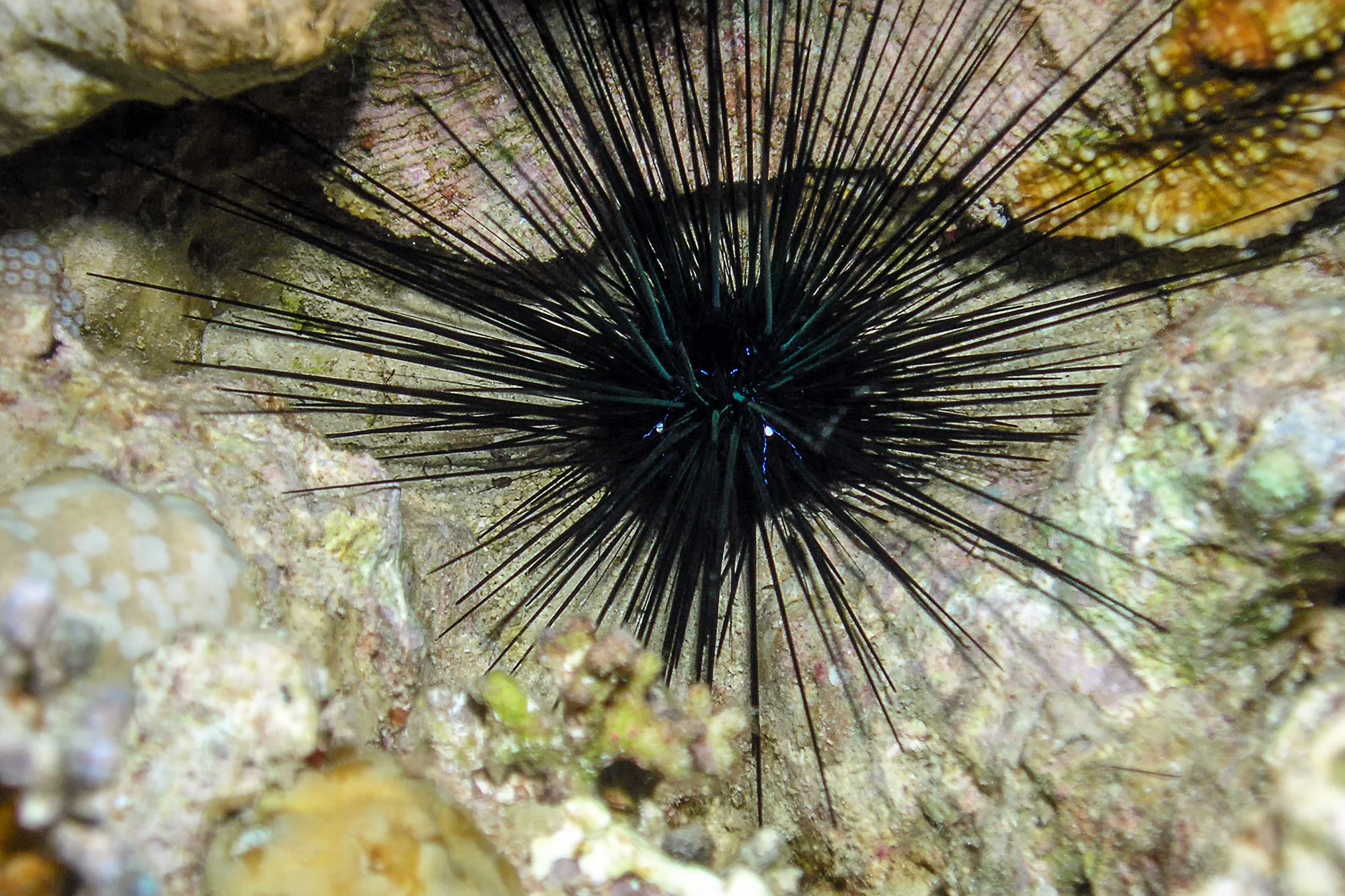2022년 카리브 해와 플로리다 동부 해안에서 긴 가시 성게의 대량 사망 원인으로 단일 세포 유기체인 순판 섬모가 확인되었습니다. 이 성게는 산호초의 건강에 필수적이며 섬모의 존재, 성장 조건 및 다른 종에 대한 잠재적 영향에 대한 질문을 제기합니다. 길고 가시가 많은 성게(Diadema antillarum)의 사진.
긴 가시 성게의 대량 사망(카리브해에서 플로리다 동부 해안에 이르는 산호초의 건강을 위협하는 손실)은 섬모라고 불리는 단세포 유기체에 의해 발생했습니다.
2022년 캐리비안과 플로리다 동부 해안에서 가시가 긴 성게를 멸종시킨 살인자 수색이 끝났습니다. 사우스 플로리다 대학 해양 과학 대학의 저명한 대학 교수인 Mia Breitbart가 조직한 연구팀은 섬모라고 불리는 단세포 유기체가 산호초 건강에 필수적인 해양 동물의 대량 사망 원인으로 확인했습니다.
그들의 연구 결과는 Nature 저널에 4월 19일 게재되었습니다.
Ciliate culture viewed under the microscope. Credit: Mya Breitbart USF College of Marine Science
“We’re beyond thrilled to get to the bottom of the 2022 mystery and a bit stunned we did it so quickly,” said Breitbart, senior author on the Science Advances study and an expert in marine genomics. “We had a great team in place and the tools needed to do the ocean science equivalent of a forensic investigation.”
Ciliates are microscopic organisms covered in hair-like structures called cilia that help them move and eat. They are found almost anywhere there is water and most are not disease-causing agents. However, this specific species of ciliate – called a scuticociliate – has been implicated in die-offs of other marine species, such as sharks, in the past.

Photo compilation showing the same sea urchin before and after infection with the ciliate in the USF aquarium research facility. Credit: Makenzie Kerr USF College of Marine Science
Examining urchins collected from 23 sites in the Caribbean, the research team used a series of techniques to confirm the source of the die-off event.
After identifying the ciliate in every affected urchin specimen using genomic techniques, the team grew ciliates in the lab and performed infection experiments at the USF College of Marine Science. When the pathogen was introduced to otherwise healthy urchins in an aquarium tank, the urchins died within a few days – replicating what was taking place in the ocean and confirming the ciliate as the disease source.

DaSc-affected sea urchin, Aruba, August 2022. Credit: Ian Hewson Cornell University
“We’re excited to share this information with everyone, from reef managers to additional scientists so we can explore it further and try to stop its spread,” Breitbart said.

Mya Breitbart (USF) viewing the ciliate culture by microscopy. Credit: Makenzie Kerr USF College of Marine Science
The long-spined sea urchins inhabit shallow tropical waters and feed on algae that would otherwise destroy a reef. They began to lose their spines within days of contracting an unknown disease and died in droves starting in January 2022.
A similar die-off event took place in the early 1980s, which wiped out 98 percent of the long-spined sea urchin population. The culprit of that die-off remains a mystery.
Breitbart first got the call about the unfolding die-off at the end of March 2022. She immediately assembled a team consisting of Ian Hewson, lead author on the publication and a marine ecologist at Cornell University; Christina Kellogg, a microbiologist from the U.S. Geological Survey in St. Petersburg, Fla. who has worked extensively on coral reef diseases; and USF graduate student Isabella Ritchie.
“At the time, we didn’t know if this die-off was caused by pollution, stress, something else – we just didn’t know,” said Hewson, an expert in diseases that cause mass die-offs of sea stars, who flew from New York to the Caribbean Islands to observe the situation.
Even with the source of the mysterious die-off uncovered, questions still remain. For example:
- Is this ciliate new to the area, or was it there prior to the die-off?
- If it has been there, what environmental conditions favored its growth and why did it infect the urchins?
- Can it affect other species of urchins?
“우리가 가지고 있는 한 가지 이론은 섬모가 처음 퇴색하기 시작했을 때 카리브해에서 관찰된 높은 생산성 조건에서 잘 자랐다는 것입니다.”라고 Kellogg는 말했습니다. “우리는 또한 이 멸종이 발생한 일부 지리적 지역과 암석 산호 조직 손실 질병으로 인해 산호초가 감소하고 있는 일부 지역이 중복된다는 사실에 대해서도 궁금합니다.”
참조: “Scuticocylate Agent는 카리브해에서 Diadema Antillarum의 대량 사망을 유발합니다” Ian Hewson, Isabella T Ritchie, James S Evans, Ashley Alterra, Donald Berenger, Irene Bowman, Marilyn Brandt, Kayla A. 버드와 롤리오 A. 카마초, 토마스 O. 콘웰, 피터 D. Kimani A. Kitson-Walters, Patricia Kramer, Judith C.Lang, Harilaos Lessios, Lauren Liddy, David Marancik, Stephen Nimrod, Joshua T. Patterson, Marit Pistor, Isabel C. Romero, Rita Sellares-Blasco, Moriah LB Sevier, William 샤프, 매튜 소우자, 안드리나 발데즈-트리니다드, 마렌 반 데르 란, 브라이언 빌라노바-쿠에바스, 마리아 빌라판도, 사라 드 폰 휴에네, 매튜 워햄, 톰 웨이어스, 스테이시 M. Yanong, Soumira Zambrano, Alise Zimmerman, Mia Breitbart 2023년 4월 19일 여기에서 볼 수 있습니다. 과학 발전.
DOI: 10.1126/sciadv.adg3200
이 연구는 국립과학재단, 지속가능한 미래를 위한 앳킨슨 신속대응센터, AGGRA, 국립해양대기청, 국립어류야생동물재단, 플로리다 키스 해양보호구역, 플로리다 어류 및 야생동물 위원회의 자금 지원을 받았습니다.




